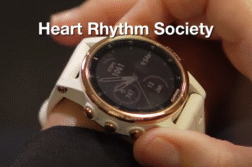PHILADELPHIA, Pa. (Ivanhoe Newswire) — The human heart beats about 65 times a minute. It maintains life and it talks to fat. That’s according to researchers at Temple University who say the heart releases substances that travel through the blood and communicate with fat cells. That could be a game changer in the fight against obesity.
What if, just like sending an email, the human heart could transmit a message to the body’s fat tissue?
Walter J. Koch, PhD, Senior Investigator at Temple University explained, “What that means is the heart releases factors or substances that travel through the blood and communicate at a cellular level with fat cells.”
Researchers say this ‘conversation’ could be the route to reducing obesity.
Koch said, “By manipulating certain enzymes in the heart, you can manipulate this and change these factors and change obesity when animals are fed a high-fat diet.”
The study shows that when the enzyme GRK2 is turned up or down, fat adjusts.
Koch explained, “When that enzyme was inhibited, the animals got super fat and when it was higher, they were lean.”
Research mice genetically engineered with the enzyme inhibited only in heart muscle cells did worse than the other mice, who didn’t gain as much weight after being fed a high fat diet.
“These mice with only their heart changed gained about three times as much,” said Koch.
Ken Gresham, PhD, Post Doctoral Fellow at Temple University said, “The idea that the heart can communicate with fat and tell it how much energy it’s using and things along those lines is very interesting.”
A pump we can’t live without that might help us in ways we never imagined.
Professor Koch’s lab also found that when mice eat high-fat diets, the enzyme GRK2 increases in the heart, which is the same thing that happens in humans when they go into heart failure. Researchers say they will continue to investigate what other parts of the body the heart is talking to.
Contributors to this news report include: Cyndy McGrath, Supervising Producer; Donna Parker, Field Producer; Roque Correa, Videographer; Jamison Kozcan, Editor.
To receive a free weekly e-mail on Medical Breakthroughs from Ivanhoe, sign up at: http://www.ivanhoe.com/ftk
MEDICAL BREAKTHROUGHS
RESEARCH SUMMARY
TOPIC: HEART TALKS TO FAT: MEDICINE’S NEXT BIG THING?
REPORT: MB #4634
BACKGROUND: According to The Commonwealth Fund, “Obesity is a grave public health threat, more serious even than the opioid epidemic. It is linked to chronic diseases including type 2 diabetes, hyperlipidemia, high blood pressure, cardiovascular disease, and cancer. Obesity accounts for 18 percent of deaths among Americans ages 40 to 85, according to a 2013 study challenging the prevailing wisdom among scientists, which had placed the rate at around five percent.” Obesity is attributed to an increase of caloric intake and reduction of physical activity.
(Source: https://www.commonwealthfund.org/blog/2018/rising-obesity-united-states-public-health-crisis)
IMPACT: Walter J. Koch, PhD, Senior Investigator at Temple University, talks about how a new discovery might have an impact on the obesity epidemic, saying, “We might find a factor that can regulate our fat mass. We’re also interested in obesity and heart failure. And there is a heart failure obesity paradox. So some patients who have heart failure who are obese could do better. So obviously we know fat cells talk to the heart, too. It’s a two-way communication. We’re interested in how the failing heart may change these factors that we’re discovering and how that relates to a person’s obesity level.”
(Source: Walter J. Koch, PhD)
NEW RESEARCH: Koch says the heart can generate messages that travel long distances through the body. “What we found is through the release of substances, it’s talking straight to your visceral white fat that we have in our abdominal cavity. And it’s our main type of fat. And by manipulating this enzyme called GRK2 only in heart muscle cells – nowhere else in the body – we could change that communication and that communicative link. And by turning that enzyme up and down, we got a reciprocal regulation of fat accumulation when the enzyme was inhibited animals got super fat, and when that enzyme was higher they were lean and they didn’t gain weight, even by eating the same amount of calories.” Koch explained the next steps, “The next step that the fellow in the lab is working on is going through systematically one by one about ten or 12 candidate molecules that we found by a large screen. And eventually if we get to the right point in the data generation, we will treat animals with that substance and see if they gain or lose weight.”
(Source: Walter J. Koch, PhD)
FOR MORE INFORMATION ON THIS REPORT, PLEASE CONTACT:
Jeremy Walter, PR
215-707-7424
If this story or any other Ivanhoe story has impacted your life or prompted you or someone you know to seek or change treatments, please let us know by contacting Marjorie Bekaert Thomas at mthomas@ivanhoe.com




